Visit Florence in 2 days
20 must-see POIs, optimized routes and anecdotes.
Loading map...
You will visit the most beautiful points of interest in Florence







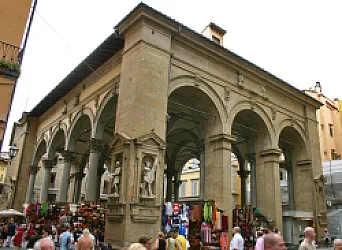
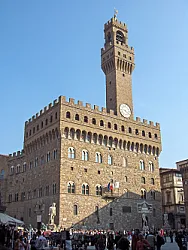
_01.jpg/320px-Loggia_del_grano_e_complesso_dell'ex-cinema_capitol_(2021)_01.jpg)
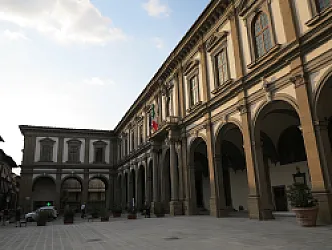





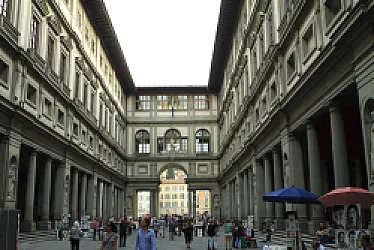
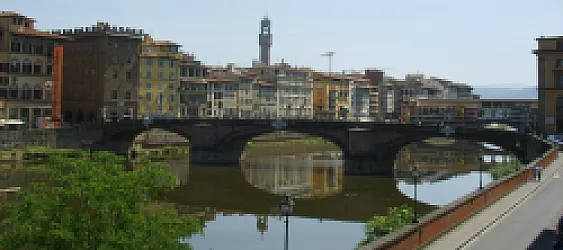
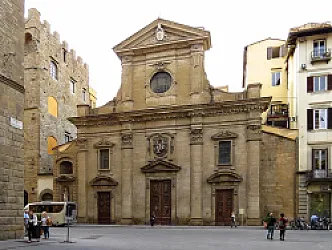
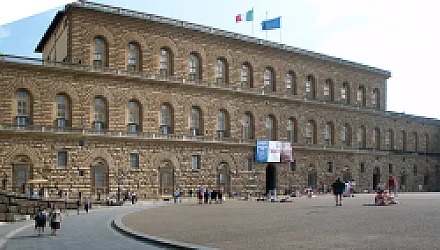
2 Days in Florence — A Whirlwind Love Letter to the Cradle of the Renaissance
Florence stole my heart the moment I stepped onto a sun-warmed piazza. The city feels like an open-air museum that still breathes and laughs. They call it the Cradle of the Renaissance, and that sounds grand because it is. Some people worry it's overrated, but Florence rewards curious travelers who linger. I visited with a small backpack and big expectations, and the city exceeded them in quiet, surprising ways.
Why visit? Because Florence is more than icons. It’s the clatter of espresso cups at dawn, the warm scent of fresh bread, and stone bridges glowing at sunset. Wander from the Ponte Vecchio across the Arno and you feel history underfoot. Stand before the Uffizi and your chest tightens with art’s presence. Climb near the Florence Cathedral and the city opens like a map of terracotta roofs. This is a city where every corner answers the question of what to see in Florence with beauty, texture, and a story.
Planning can feel overwhelming. You could spend weeks here and still miss tiny miracles. I get the pressure if it’s your first time in Florence and you want to do it all. That’s why I created this Florence itinerary for people who have limited time but big curiosity. Below I’ll show you exactly how to spend 2 days in Florence without rushing through the soul of the place. You’ll hit the essentials and discover small delights in between.
Key tip: Book major museum and Florence Cathedral tickets in advance and plan to start early. Early entry slices through crowds and gives you moments of quiet in places others only glimpse briefly. Timed tickets free up your afternoons for wandering alleys, tasting gelato, and lingering on bridges. Now let’s dive into the itinerary and make your two days in Florence feel like a proper love affair.

Quick Mini Guide to Florence
Where to stay:
- Duomo/Centro Storico — step outside to Florence Cathedral, Palazzo Vecchio and early-morning queues for Uffizi.
- Oltrarno — artisan workshops, quieter evenings, sunset strolls to Ponte Vecchio and Piazzale Michelangelo.
- Near Santa Maria Novella station — practical for train arrivals/departures without losing historic-centre access.
When to visit:
- Early morning for Uffizi and Duomo climb (less crowds, best light on frescoes and the city view).
- Golden hour at Ponte Vecchio and along the Arno — prime photo time and lively aperitivo scene in Oltrarno.
- Shoulder seasons (Apr–May, Sep–Oct) for fewer crowds and comfortable walking weather.
Things to do:
- Book Uffizi timed entry; linger at Botticelli and the Vasari Corridor views of the Arno.
- Climb Florence Cathedral’s cupola for panorama; visit Palazzo Vecchio’s tower and secret rooms.
- Stroll Piazza della Repubblica, then cross to Ponte Vecchio for artisan goldsmiths.
- Try interactive tours: Mates; Mess and Madness FLORENCE; The Alchemist FLORENCE for themed, local-led experiences.
Don't forget:
- Prebook Uffizi and Duomo tickets; expect cobblestones—wear comfortable shoes.
- Carry some cash for small ateliers and leather shops; respect quiet in churches and museum photo rules.
Day 1 - Florence
10 POIs to discoverDay 1 - Morning à Florence
5 Points of interest - Duration : 3h45 - Distance : 1.2 km - Walking : 0h15Palazzo Fenzi
- Palazzo Fenzi is a historical building which today belongs to the University of Florence, home to the Department of History, Archaeology, Geography, Art, and Performance (SAGAS).
- The building was designed by Gherardo Silvani and its construction started in 1628-1630 for the Castelli family.
- It underwent significant architectural and artistic transformations in the 17th and 18th centuries, including various notable frescoes, the works of Sebastiano Ricci from 1706-1707 being some of the most significant.
- One noteworthy development was the creation of a thoroughly independent building to house Francesco Marucelli's large book collection.
- This repurposing of the back area of the estate created what was the first public library of its kind in Florence.
- In 1783, it was bought by Brunaccini family and in 1829, by Emanuele Fenzi, a prominent banker and constructor of the Leopolda railway line.
- It is elaborately decorated, with a large central gated portal featuring grotesque figures of Satyrs, work of Raffaele Curradi, dating to 1634, and bronzed manuscripts of turtles on the ground floor window grates.
Palazzo Niccolini
- The Niccolini palace, formerly Ciaini-Da Montauto, was originally owned by the Ciaini da Montauto family, a wealthy family from the 1300s due to the economic skills of Bastiano Ciaini. In the 1500s, Bastiano Ciaini built the palace where some ancient houses already existed, yet he died shortly after its completion.
- In 1575, Ciaini's descendants had to sell the family palace to Giovanni Niccolini, who paid a considerable amount for the prestigious construction.
- Giovanni Niccolini significantly renovated and expanded the palace at the end of the century, adding a second courtyard facing a majestic facade, and enriching the building with paintings and murals.
- The palace underwent numerous ownership changes and transformations during the 20th century, including being used as a headquarters for the fascist party, housing for Anglo-American troops, headquarters of the Communist Party, and more.
- Today, the building is used as the regional Court of Accounts for Tuscany.

Monument to General Manfredo Fanti, Florence
- The Monument to General Manfredo Fanti commemorates the Italian general Manfredo Fanti (1806-1865), who played a significant role in battles for Italian independence and unification.
- The statue was created by Pio Fedi and was erected in 1873.
- The statue stands before the headquarters of the Royal Military Command, seemingly ready to step off its pedestal.
- The base of the statue features two marble bas-reliefs: one depicting the arms of war, and the other an event from the Battle of San Martino.
- Corner figures symbolize politics, strategy, tactics, and fortifications.
- The statue shows Manfredo Fanti bare-headed and balding, a stark contrast to Fedi's helmeted figure of Pyrrhus in his other masterpiece, the Rape of Polyxena.
- The inscription on the plinth details Fanti's life, highlighting his love for freedom, exile in 1831, military learning in Spain, and his role in uniting Italy.
- He passed away on April 5, 1865.

Piazza della Santissima Annunziata
- Piazza della Santissima Annunziata has been named since the second half of the 13th century, in connection with the primitive church founded in the same period by the Servi di Maria.
- The piazza is considered an architectural model of Renaissance urban design, featuring a uniform character amongst Florentine squares and best represents the ideals of the city during the Renaissance.
- The Basilica of Santissima Annunziata, one of the most important sacred buildings in Florence, dominates the square.
- In the center of the square stands the equestrian monument to Ferdinando I de' Medici, completed by Pietro Tacca, with two fountains featuring sea creatures, masterpieces of Tacca and Mannerist sculpture.
- The piazza, with its basilica, has undergone several phases of expansion since its establishment, involving some of the greatest Renaissance architects and leading its current harmonious stylistic appearance.
- Today, the square is the focal point of several city festivals and markets, particularly the Annunciation of the Virgin Mary (25 March) and the Nativity of Mary (8 September).
Palazzo Dardinelli-Fenzi
- The Palazzo Dardinelli-Fenzi was built for the Dardinelli family in the late 16th century.
- Its facade is well recognized for its lavish graffiti.
- The architect of the building was Santi di Tito.
- The Dardinelli family's coat of arms is located at the center of the facade.
- The Fenzi family, who purchased it in the 19th century, also has their coat of arms displayed higher up on the building.
- The Fenzi family combined it with their other large family palace.
Day 1 - Afternoon à Florence
5 Points of interest - Duration : 3h00 - Distance : 1.1 km - Walking : 0h14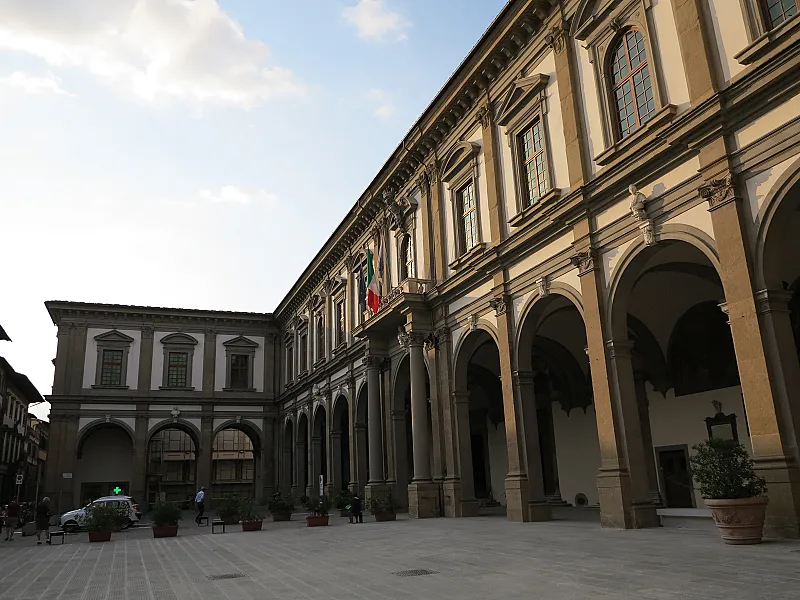
Hospital of Santa Maria Nuova
- The Hospital of Santa Maria Nuova in Florence, Italy, is one of the oldest and most functioning hospitals in the city.
- Founded between 1285 and 1288, it can accommodate approximately 2000 patients.
- It was founded by Folco Portinari, the father of Beatrice Portinari, who was idealized by Dante Alighieri in his works.
- Monna Tessa, a servant of the family, persuaded Portinari to build the hospital in 1285.
- Over the years, the hospital has grown thanks to donations from citizens.
- Some of the masterpieces that decorated the hospital have been moved to nearby museums, such as the National Museum of San Marco.

San Michele Visdomini
- The Church of San Michele, also known as San Michelino Visdomini, is a Catholic place of worship with its current building commencing in 1364.
- The church houses various artworks such as the pales from Poppi, Empoli, and Passignano, and Pala Pucci, a masterpiece by Pontormo, made in 1518.
- The Church underwent major renovations upon the arrival of Celestine monks, creating new chapels and shifting the entrance to open to a small square.The flood of 1966 severely damaged the church, during the restoration, remains of frescoes from the 14th century were discovered in the transept.
- Renowned painter Filippino Lippi was buried in the church as per a plaque on the church facade.
- The church has a single nave layout with lateral altars and a transept opening into two more chapels and a central one.
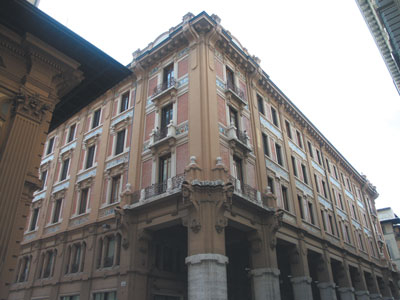
Palazzo Pola e Todescan
- Palazzo Pola e Todescan, also known as casa Paggi, is a civil building that was erected between 1901 and 1903 by Fratelli Taiuti construction company based on the designs of Giovanni Paciarelli.
- Originally, the building hosted a large warehouse, specializing in the sale of affordable goods.
- It is now occupied mostly by a bank and as of 2021, a restaurant inspired by Sofia Loren's cuisine.
- The architectural style of the building, designed by Paciarelli, is a blend of the emerging Liberty style and 19th century style, showing an imposing mass decorated with sculpted protomes, colored ceramic friezes, and wrought iron works.
- The building extends over three more floors beyond the ground floor, with travertine-coated colonnades on the ground floor and a mezzanine floor.
- The ground floor spaces feature large window displays.
- The ornamentation of the building, with ceramic mirrors and balconies enhanced with male and female protomes, breaks away from the traditional architectural styles of the 16th and 17th centuries.
- Despite initial criticism for deviating from the traditional architectural styles, this building is now heralded as an early example of the penetration of modernist style in the city's ancient center.

Statue of Giovanni delle Bande Nere
- The monument to Giovanni delle Bande Nere was commissioned by Cosimo I de' Medici in 1540 and made by Baccio Bandinelli.
- The statue should initially have been placed in the Neroni Chapel inside the San Lorenzo basilica, thus explaining the depicted warrior seated atop the base. ⌛ Despite an initial deadline of two years, the work was not completed before Bandinelli's death in 1560.
- The base of the monument was transformed into a public-use fountain by Giuseppe Del Rosso in 1812.
- The statue was only put in its current place in 1850 under the supervision of engineer Alessandro Manetti.
- The monument went through various restorations and renovations, the most recent of which took place in 2012.
Porta della Mandorla
- �� The construction of the Mandorla Door was done between 1391 and 1423 by various sculptors, including Giovanni d'Ambrogio, Donatello, and Nanni di Banco.
- The door's sculptures are significant in art history as they were crafted during the transition between the final Gothic phase and the early Renaissance.
- It was the last side door to be constructed and is regarded as the most beautiful of all four.
- Between 1489-1490, the Annunciation mosaic in the lunette was completed by artist David Ghirlandaio with help from his more famous brother Domenico.
- The portal was subject to significant restoration, commencing in 2002 and concluding on June 5, 2012.
- The sculptural decoration theme is of the Virgin Mary and her saving mission for humanity, with a significant part of it being the handover of the cinch during her ascension (the apex's relief).
- The portal is decorated with bas-relief plant decorations on the half-pillars, crosspiece, and archivolt.
Day 2 - Florence
10 POIs to discoverDay 2 - Morning à Florence
5 Points of interest - Duration : 3h30 - Distance : 0.9 km - Walking : 0h11
Piazza della Repubblica
- The Piazza della Repubblica marks the site of the city's forum in Roman times.
- The square was redeveloped during the "Risanamento" project (until 1895), during the period when Florence was the capital of the Kingdom of Italy.
- Medieval towers, churches and palaces were demolished to make way for new buildings, with the aim of modernizing the city and the economy.
- During these transformations, archaeological traces were discovered, including the remains of Roman baths and other buildings.
- The Column of Abundance is the only vestige of the ancient Piazza del Mercato Vecchio.
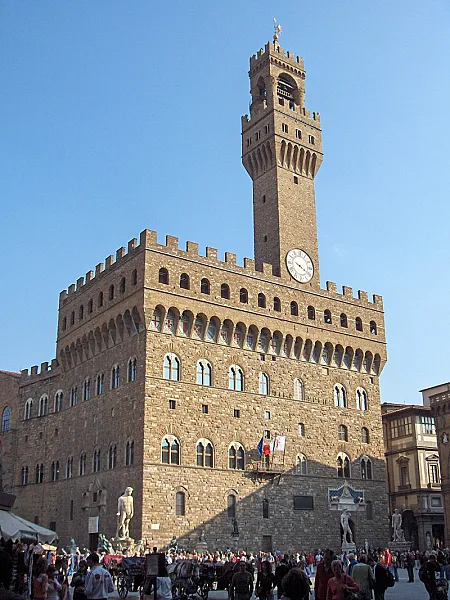
Palazzo Vecchio
- Palazzo Vecchio is an iconic building that houses the offices of the city's Town Hall and is open to the public as a museum.
- The building is notable for its iconic Arnolfo Tower.
- Palazzo Vecchio served as the residence of Cosimo I de Medici and was the seat of government when Florence became the capital of the Kingdom of Italy between 1865 and 1871.
- Inside, the palace features an impressive accumulation of artwork, including murals, paintings and sculptures.
- Palazzo Vecchio also boasts an impressive inner courtyard and a bell tower that was used as a prison in the past.
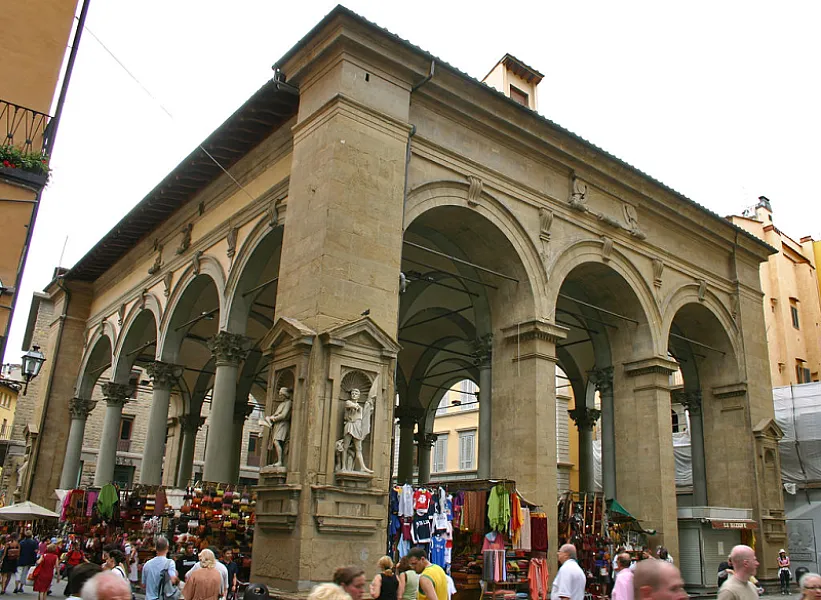
Loggia del Mercato Nuovo
- �� This loggia, also known as the "Porcellino" because of the famous fountain nearby, dates back to the 16th century.
- It is famous for being a place where leather goods and souvenirs are sold, making it a popular shopping destination.
- The nearby fountain depicts a wild boar and is an iconic symbol of the city.
- The loggia features Renaissance architecture with columns and arches that have been maintained over time.

Orsanmichele
- �� Originally a barn, the Church of Orsanmichele was converted into a church in the 14th century.
- The church features an impressive facade and a series of statues in its niches.
- The name "Orsanmichele" is derived from "Orto di San Michele", meaning "Orchard of St.
- Michael", referring to its origin as a granary.
- Inside it houses a collection of remarkable sculptures and paintings, including works by prominent artists.
- Throughout its history, the church has served as a place of worship and prayer.
_01.jpg)
Loggia del Grano
- La Loggia del Grano in Florence is a listed national artistic heritage building, according to a list made by the Direzione Generale delle Antichità e Belle Arti in 1901.
- The loggia has historically been used as a grain market, with the purchase and sale of grain happening daily, supervised by the "Ufficiali della Grascia" who ensured the quality, quantity, and price regularity.
- The old Florentine saying "a tutto spiano" (with total abundance) is connected to the loggia, since "spiano" was the measure of grain assigned to bakers each month, if there were no product shortages.
- The current structure was commenced in 1619 by architect Giulio Parigi, commissioned by Grand Duke Cosimo II, to replace the previous structure that was no longer suitable for the city's needs.
- By 1690, the loggia lost its original role and underwent various transformations.
- It was used as a printing house, the editorial office of the Il Monitore Toscano newspaper, and was even converted into a theatre by architect Andrea Scala, commissioned by actor Tommaso Salvini.
- As of December 14, 2022, the loggia became the location of the Coin department store, after having been used as an ethnographic market, a restaurant, and an outdoor bookstall in the early 1990s.
Day 2 - Afternoon à Florence
5 Points of interest - Duration : 4h15 - Distance : 1.6 km - Walking : 0h21
Ponte Vecchio
- �� Ponte Vecchio is one of the oldest bridges in Europe and its history dates back to the Middle Ages.
- From the bridge, you can enjoy panoramic views of the Arno River and other bridges in Florence.
- The bridge is famous for its medieval architecture and for being lined with jewelry stores and workshops.
- The stores along the bridge offer jewelry and luxury goods, making it an exclusive shopping destination.
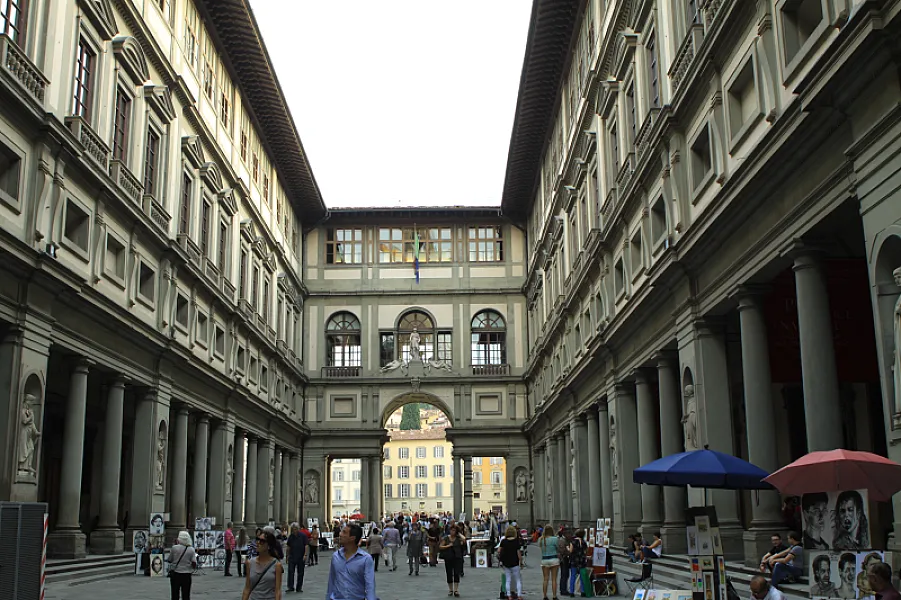
Uffizi
- �� Founded in 1584, the Uffizi Gallery is one of the oldest and most prestigious museums in Italy.
- It houses an impressive collection of Renaissance and Baroque art, with masterpieces by artists such as Botticelli, Michelangelo, Leonardo da Vinci and many others.
- It is a treasure trove for art and art history lovers, with a wide range of paintings, sculptures and decorative art.
- From some of the Uffizi Gallery's windows, you can enjoy panoramic views of Florence and the Arno River.
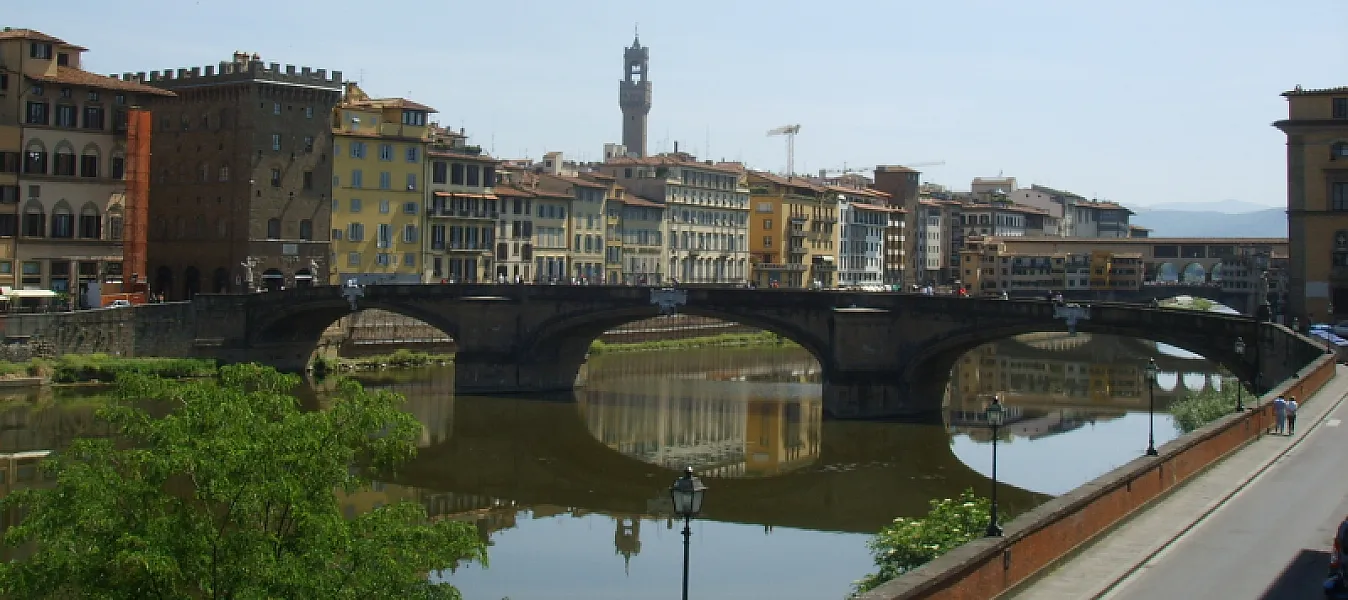
Ponte Santa Trinita
- �� Santa Trinita Bridge was built in the 16th century and is an impressive example of Renaissance architecture.
- It is known for its elegant architectural design, with three arches reflecting in the water.
- From the bridge, you can enjoy panoramic views of the Arno River and other Florentine monuments.
- In spring and summer, the bridge is adorned with flowers, which gives it an additional charm.
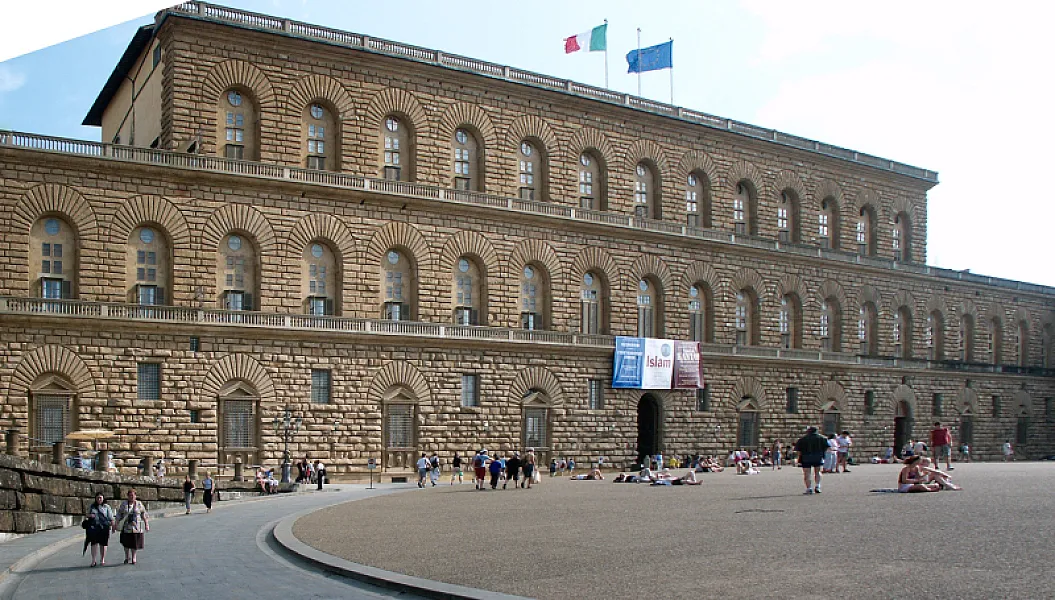
Pitti Palace
- �� Pitti Palace, built in the 15th century, has witnessed the history and royalty of Florence.
- It features an impressive Italian Renaissance style with its imposing façade and gardens.
- The beautiful Boboli Gardens, which are part of the complex, offer a unique natural experience.
- The palace houses several art galleries with masterpieces by famous painters, such as Titian and Raphael.
- From the gardens, you can enjoy breathtaking panoramic views of Florence.
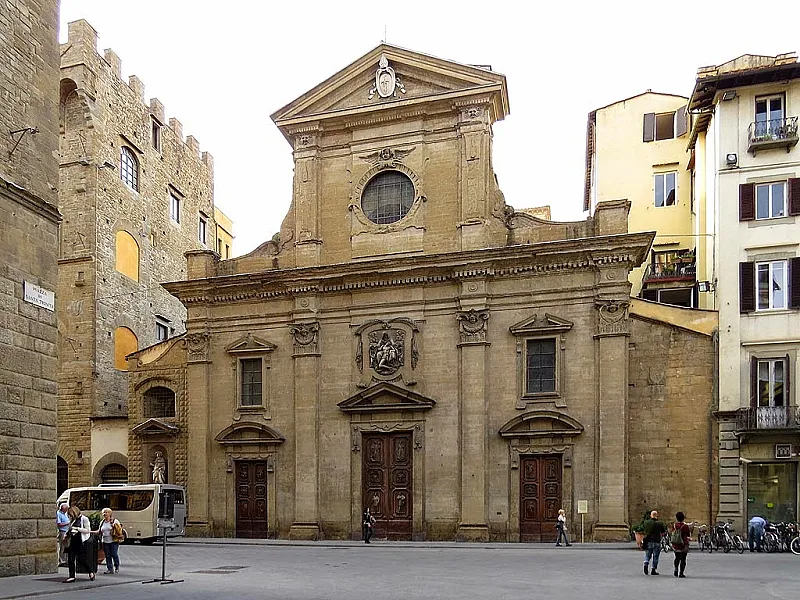
Basilica of the Holy Trinity
- �� This Gothic-style church was built in the 13th century and is known for its history and its connection to the Order of Friars Minor.
- The church features an elegant bell tower that is part of the Florence skyline.
- It houses an impressive collection of sacred art, including paintings and sculptures by prominent artists.
- The church has been of great religious importance over the centuries and remains a place of worship today.
- In addition to its historical and artistic value, the church continues to be a place where religious services are held.
Where to Stay in Florence
When you only have two days in Florence, location is everything: it determines how much of the city you see and how relaxed each day feels. Staying close to the core means you’ll spend more time enjoying masterpieces and less time on transit. Choose a base that keeps your walking between museums, cafés and squares short—Florence’s compact center rewards slow, on-foot exploration, so a well-placed room can turn a frantic itinerary into a pleasant stroll.
The city is organized around the river and the cathedral, with a dense medieval grid at its heart. The Arno splits the historical center, and most highlights cluster on or near the north bank. If you want to orient yourself quickly, think in terms of the river, the cathedral dome and the main piazzas. From a central point you can reach the Ponte Vecchio and the Uffizi in minutes, and the glorious silhouette of the Duomo is a useful visual landmark to navigate by as you move between sights.
For an immersive short stay, pick neighborhoods that put your top priorities within easy reach. If you want to wake up steps from medieval bridges and sunset views, stay near the river and the Ponte Vecchio. Art lovers who want early access to galleries will appreciate places within a short walk of the Uffizi and the Piazza della Repubblica, which keeps you centrally placed for both museums and lively cafés. Across the Arno, the Oltrarno quarter offers a quieter, artisan feel in the evenings without sacrificing proximity to the principal attractions.
Transport in Florence is simple: most visitors rely on walking supplemented by short tram, bus or taxi rides. The Santa Maria Novella train station sits just outside the historic core and is the easiest arrival point if you come by train; a direct tram now connects the center with the airport. Taxis are useful for luggage or late returns, but for two days you’ll likely find walking the most efficient—and the most pleasurable—way to move between the Duomo, museums and riverside.
Finally, be practical about the quirks of historic buildings: many charming accommodations occupy older palazzi with narrow staircases, so if stairs are an issue ask about lifts. In summer seek air-conditioning and in colder months confirm heating. Prioritize a location that reduces daily transfers rather than extra bells and whistles—comfort and proximity will make your short Florence visit feel unrushed and truly memorable.
Getting Around Florence
Florence feels smaller than you imagine, and that makes public transport delightfully straightforward: a compact center you can often walk, plus a modern tram and bus network for longer hops. The city runs the Tramvia lines and the local buses operated by ATAF, with clear stops, readable timetables, and drivers who are used to tourists. If you're comfortable reading signs and following a simple route, you’ll find that traveling from a train at Santa Maria Novella to a museum or piazza is low-stress and fast — and even the trams have space for bags so airport-to-center transfers are easy. 🚇
One very practical tip: always buy and validate your ticket before you ride. Tickets are sold at tabacchi, newsstands, machines at stops, and via the official ATAF app; validation machines are on board buses and at tram stops. A single ticket (usually affordable and valid for about 90 minutes) will cover transfers inside that time window, and there are day or multi-day passes if you plan many trips. Remember that the Firenze Card covers museums, not transport, so keep a separate ticket for buses and trams. 🎫
Use Google Maps or your preferred map app to plan door-to-door routes: it reliably shows walking time between the Ponte Vecchio, the Uffizi, and Piazza della Repubblica, plus which bus or tram to catch if you prefer not to walk. The app gives real-time departures and step-by-step walking directions, so you can choose scenic routes through the Oltrarno or the fastest path if you're short on time. I check it before leaving a café and it almost always points me to the best option for that moment.
To save money, walk when you can — many of the main attractions are a short stroll from each other — and buy a day pass only if you’ll take several long rides or a transfer to the airport. The tram to the airport is a fraction of a taxi fare and extremely convenient, while afternoon sightseeing on foot keeps your costs down and helps you stumble on alleys and shops you’d otherwise miss.
I remember arriving by train, buying a ticket at a newsstand, validating it, and walking from Santa Maria Novella to Piazza della Repubblica; from there we popped into the Uffizi and strolled over the Ponte Vecchio in less than 15 minutes — no transfers, no fuss. If your legs get tired, hop a tram or bus for one stop; the system is there to make your exploration feel effortless, and once you try it you'll feel like a local in no time. 🗺️
What to Pack for Florence
Florence is a city you explore on foot: the Duomo, winding streets, and those famous stone bridges invite hours of wandering. I’ve done days where I walked 12–15 miles (yes, my feet still remember), so I pack light but smart. Below are the essentials I bring on a 48-hour trip — practical, tested, and focused on comfort and convenience while admiring Renaissance architecture and crossing the Ponte Vecchio.
1. Comfortable walking shoes (required): Bring broken-in sneakers with good arch support — I wear New Balance 574s or leather Ecco sneakers. On my last visit I was out for 10+ hours and walked roughly 14 miles; blisters would have ruined the day. Cobblestones and uneven pavement make cushioning and a non-slip sole essential.
2. Cross-body bag (anti-theft): A small, zippered cross-body with RFID pocket kept my phone and passport safe when I stopped to photograph the Arno. Pickpockets can target crowded viewpoints and bridge sidewalks, so having your hands free and valuables snug against your body matters — I learned this after someone brushed past me near Ponte Vecchio.
3. Weather-appropriate layers: Florence days can swing — sunny afternoons and cooler evenings. I pack a light merino or cotton layer, a thin packable rain jacket, and a scarf. On one spring evening it dropped 10°C, and that scarf saved me while sipping wine on a terrace overlooking the skyline.
4. Power adapter (Italy: Type C/F/L, 230V): Cameras and hair straighteners need the right plug. I carry a small universal adapter so my phone and camera batteries don’t die before sunset shots of the piazzas. I once had to hunt a hostel desk for an adapter at 11pm — avoid that stress.
5. Power bank (10,000 mAh): A compact 10,000 mAh power bank kept my phone charged through a full day of navigation, photos, and audio guides — useful when I was out exploring architecture and bridges for 9–12 hours straight. Choose one charged to at least 80% before you leave the hotel each morning.
6. Optional — Collapsible water bottle & compact umbrella: Florence’s summer sun and occasional showers make a reusable bottle handy (I refilled at fountains) and a tiny umbrella fits a day bag. Both saved me money and discomfort on a rainy afternoon when I ducked into a café and waited out a sudden shower.
Enjoy Your Trip to Florence!
In two days you'll explore 14 highlights of Florence, packed with art, architecture and charm. From the golden span of Ponte Vecchio to the masterpieces of the Uffizi and the lively Piazza della Repubblica, this itinerary gives you everything you need to taste the city's soul and hit its most iconic spots with confidence and joy.
Remember, this is a GUIDE, not a strict schedule: treat it as a map of possibilities. Try to leave room for the unexpected — the real magic often happens when you wander, get delightfully lost down a cobbled lane, stumble on a tiny church, or pause for a spontaneous café stop. Don't feel pressured to see EVERYTHING; soak in moments instead of racing through them.
I hope you fall for Florence's light, flavor, and stories. I'm excited for you — you're going to have an amazing time exploring cathedrals, bridges and museums, meeting locals, and creating unforgettable memories. Embrace slow strolls, hearty meals, and little surprises; they'll be the moments you remember long after the postcards fade.
Want to explore in a playful way? Check out our Coddy tours—Mates, Mess and Madness FLORENCE, and The Alchemist FLORENCE—fun, gamified walks that turn discovery into a game. They’re a great option to add energy and stories to your two-day adventure.
Have fun exploring every corner of Florence — and if you want, tell me about your favorite discovery or ask a question before you go. Safe travels!
Want more adventure?
Discover our urban escape games to transform your visit into an interactive adventure!













